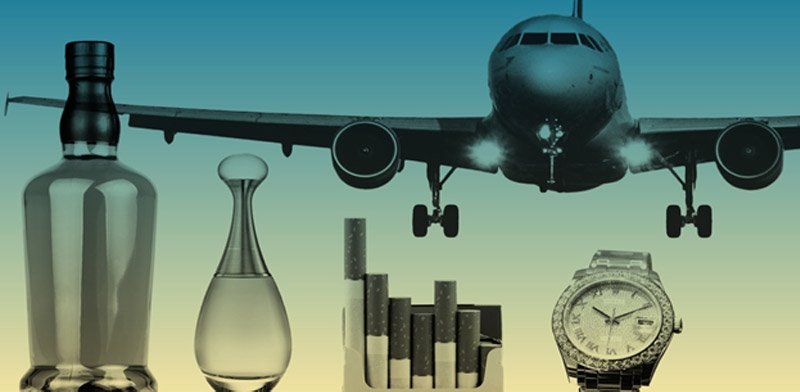
Airport Retail
Travel retail market worldwide, expected to achieve about USD 109 billion in revenue by 2025, and has grown immensely over last two decades. The growth is due to combination of three factors –
1) Huge growth in numbers of people traveling globally
2) Rise of the middle classes especially among nations with growing economies, and
3) Investment made by brands, retailers and key transport-sector operators to maximise capacity and quality of facilities at various travel locations
Ports, cruise & border land travel retail shops are growing too but contribution to overall business stays just over 10%. Consequently, airport retail dominates overall global travel retail market.
Global airport retailing 2016-2021 also predicted that global airport retailing is expected to grow at a CAGR of 5% to reach USD 49 billion over the forecasted five years window out of which Asia-Pacific will record the fastest growth in airport retail sales - annual growth between 2016 and 2021 showing an increase of 38%.
India’s Aviation sector
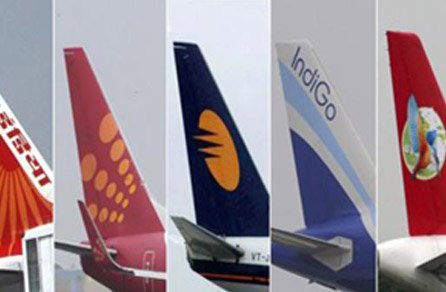
India is among fastest growing economies of the world and has contributed an increased share of air travelers to the world. The country has an enviable Civil Aviation industry comprising of 460+ airports and air strips due to which she is expected to become largest aviation market in the world by 2030 relying on an AAI (Airport Authority of India)-managed network of 126 airports including 21 international, 78 domestic, 8 customs and 19 civil enclaves at defense airfields. The Civil Aviation industry has ushered in a new era of expansion, driven by factors such as low-cost carriers, modern airports, FDI in domestic airlines, advanced IT interventions and growing emphasis on regional connectivity. FDI inflows of USD 1.01 billion in air transport (including air freight), between April 2000 and March 2017, has been encouraging too.
Increased air travel
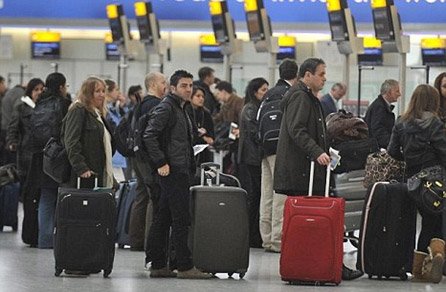
India, from managing over 250 million passengers in 2016 to expectation of hosting 421 million by 2020, shows impressive capability to grow at a CAGR of 14%. Government has also made efforts to double the number of airports in India during the period to cater to the increased passenger traffic. Ministry of Civil Aviation along with AAI is developing small airports with frugal facilities, and encouraging private airlines to bid for routes connecting these small airports with existing larger airports, thereby increasing regional air traffic.
Indian private airline companies, have been awarded with the right to fly to 128 routes across India, requiring them to cap half the seats at nearly 50% of the fare, under the Government of India’s regional aviation scheme ‘Ude Desh Ka Aam Nagrik’ (UDAN) to make flying affordable for common man.
Transformed airports
Indian airports have come a long way since catering only to the business of flying passengers. Airport infrastructure has taken a big leap in the major metros, post the advent of private operators. The international standard of infrastructure brought about in the airport terminals of metro-cities in recent years has now led them to catch up with global airports both in the ‘look and feel’ department as well as with the trend of promoting airports as key retail hubs.
Airports in major cities such as Mumbai, New Delhi, Bengaluru and Hyderabad have been revamped to more vibrant, lively and effervescent destinations. The transformation primarily happened with the privatisation of airports, led by operators such as the GVK and GMR Groups, resulting in private-public partnerships. Small, gloomy airport retail areas converted into glitzy shopping lounges, with people having high disposable incomes frequenting them, retail sales here are outperforming conventional retail markets and high street shops. Thus, airport retailing appears poised for an impressive growth in India.
Airport retail
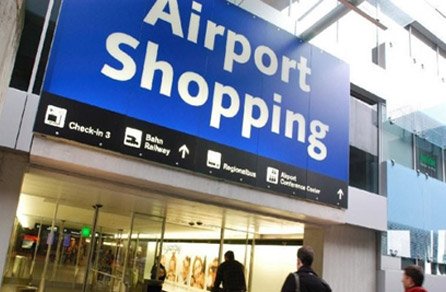
Today, airport retailing offers such business opportunity as no retailer can ignore. In the Indian context, till a few years back the idea of duty-free shopping at airports largely comprised purchasing cheaper liquor or foreign chocolates and perfumes. Thanks to the emergence of concept of airport retail, this no longer holds true. The new age discerning traveler has been recognized as a serious consumer of goods and his tastes are being indulged in every possible way; pushing forth the concept of airport retailing.
A number of factors have been responsible for the development of airport retailing in India. In recent years, passenger traffic has gone up exponentially with a number of low-cost airlines emerging on the scene, thereby giving way to a large captive consumer base right at the airport itself. Besides, the time spent by passengers at airports has increased due to early check-in times set by airlines owing to security and operational concerns, providing them with the opportunity to visit retail stores. Maximum shopping is done by people in the window between clearing the security-immigration desks and boarding the aircraft. Further, factors such as evolving consumer attitudes, attractive real estate, encouraging regulatory and economic environment and the overall ecosystem have fueled its growth. This has increased retail opportunities; thereby leading airports to develop retail as an integral part of operations rather than pushing the segment away in low-visibility corners.
Focused strategy
Retailers admit the fact that presence at airports is integral to Omni-channel retail. Seeing the potential that exists in airports with assured consistent footfall 24x7, all 365 days, retailers are polishing their act. Taken plunge into airport retailing they experience very different retail metrics, which are significantly higher compared to what is observed in a mall or other high-street stores. With compact store spaces allocated to them, the retailers plan and execute well to derive maximum efficiencies. The high cost of occupancy in airports makes them adhere to right category mix yielding healthier ROI from inventories. Airports, on their part, too, allow shops to experiment with formats, either as a shop-in-shop, kiosk or larger stores (about 2,000 square feet), with rents between Rs. 3,000-5,000 per sq ft.
Advantage to retailer
Besides the scope of revenue, retailers earn multiple branding opportunities which airports offer as powerful platform, addressing a diverse range of clients. While the challenge rests in the fact that retail space is considerably expensive at airport, making it difficult for many to invest in, brands still prefer to be located there in anticipation of effective branding. Despite the expensive proposition, the idea of branding holds much significance because, if it proves effective in the upcoming times, airport retailing successfully proves as another avenue for retailers and investors alike to invest in it as a profitable venture.
Growing sales

The occupancy at airports is close to 95%; trading density at least 80% higher compared to a mall or a high-street. The Centre for Asia-Pacific Aviation (CAPA) estimates that the duty-free spend at Indian airports will reach USD 1.6 billion by 2021 – an eight-fold increase. The collective spend on duty free, duty-paid and food and beverage is expected to touch USD 3.5 billion by the same time.
Product mix
The product assortment offered by both international and domestic brands at their airport shops do differ from their other stores and requires research on an ongoing basis as the merchandise mix and type of offers here are for travelers, and not shoppers. According to Verdict Retail’s Airport Retail Survey and Luxury Trends 2015-2016, precious jewellery, briefcases, men’s bags, and handbags are among the most likely items to be purchased at airport stores. Leading designer clothing and footwear brands, especially those of a foreign origin, are fast becoming most preferred among travelers. There is also a gradual shift towards fragrances, cosmetics and luxury watches.
Sizing stores
For the retailers coming into airport space, adapting to the environment and making the most of smaller retail areas is crucial to their success. While apparel stores can have a store size ranging anywhere between 500 sq ft and 5,000 sq ft, bookstores have an average store size of 200-300 sq ft. Food and beverage store sizes are generally smaller as common sitting areas are provided by the airports.
Investing in airports
AAI has the mandate to privatise some of its profitable airports thus investors have to make some critical decisions around business models - to choose between aeronautical revenues or non-aeronautical revenues as the primary revenue driver. Retail constitutes key part of non-aero revenue and is a function of rising incomes. Relatively low income in India as per global standards asks for the asset returns to be based on generating aeronautical revenues and maximising non-passenger, non-aeronautical revenues. However, for certain airports, real estate development to create a critical mass of non-aero revenue assets is crucial to make them profitable. Therefore, the decision regarding the business model becomes crucial because the only and most important commodity is the land available.\
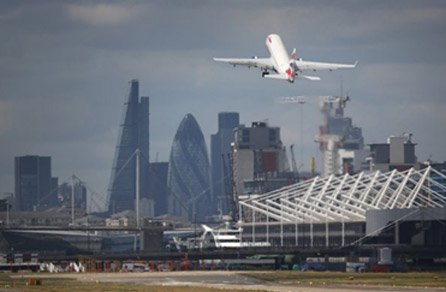
Building significant non-aero revenue-generating assets means that if passenger growth were to pick up in the years to come, the available land will be insufficient for terminal and runway expansion. On the other hand, not building non-aero assets would imply more land available for the future but a lower revenue stream. In a dynamic economy such as India, therefore, passenger growth predictions coupled with exceptional real estate asset management emerge critical to delivering optimum returns. This goal should direct investors to pick their business models cautiously out of hybrid or single or dual till*, depending upon what government policy, in this regard, has to offer.
If airports need to make significant expansions by incurring substantial capital expenditure, a hybrid or a dual till model is a better solution. Consistent policy with economic return at its core agenda is equally important. Though each asset deserves due attention the fact is that an airport with over-capacity will have significantly different dynamics from one which is still growing and relatively under-utilised. Talks about airport privatisation have been around for a while now. Given the growth in air traffic and economic benefits that airport infrastructure creates, now is the opportune time to privatise airports to generate capital to develop new infrastructure. For investors, airports are an asset class that deserves attention for those bullish on the Indian growth story over the next few decades.
This article is part of the story done for a leading industry portal

